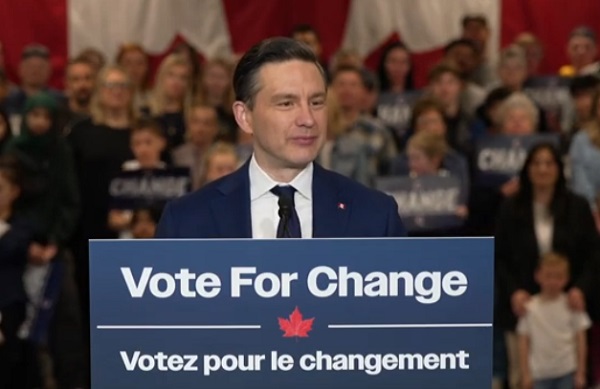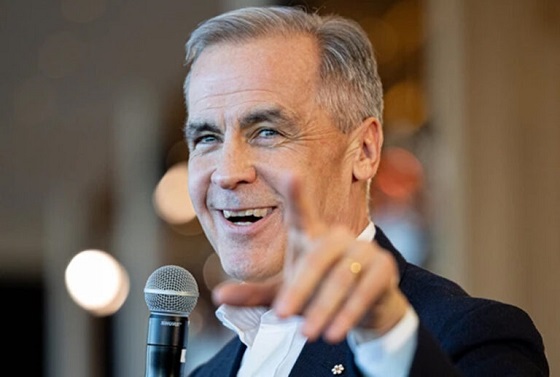Business
Federal government’s latest media bailout another bad idea

From the Fraser Institute
By Matthew Lau
If the value of local radio stations, as measured by how much revenue they generate, is higher than the costs of running those stations, no subsidies are needed to keep them going. Conversely, if the costs are higher than the benefits, it doesn’t make sense to keep those radio stations on the air.
The governmentalization of the news media in Canada continues apace. According to a recent announcement by the Trudeau government, the “CRTC determined that a new temporary fund for commercial radio stations in smaller markets should be created.” Now, radio stations outside of Montreal, Toronto, Vancouver, Calgary, Edmonton and Ottawa-Gatineau will be eligible for taxpayer subsidies.
Clearly a bad idea. Firstly, there’s no obvious market failure the government will solve. If the value of local radio stations, as measured by how much revenue they generate, is higher than the costs of running those stations, no subsidies are needed to keep them going. Conversely, if the costs are higher than the benefits, it doesn’t make sense to keep those radio stations on the air.
The government said the new funding is “temporary” but as economists Milton and Rose Friedman famously observed, “Nothing is so permanent as a temporary government program.” Taxpayers may can reasonably expect that subsidies to local radio news stations will become an ongoing expense instead of a onetime hit to their wallets.
Indeed, the Trudeau government has a history of making temporary or “short-term” costs permanent. Before coming to power in 2015, the Liberals proposed “a modest short-term deficit” of less than $10 billion annually for three years; instead this fiscal year the Trudeau government is running its 10th consecutive budget deficit with the cumulative total of more than $600 billion.
Secondly, the governmentalization of media will likely corrupt it. Here again an observation from Milton Friedman: “Any institution will tend to express its own values and its own ideas… A socialist institution will teach socialist values, not the principles of private enterprise.” Friedman was talking about the public education system, but the observation applies equally to other sectors that the government increasingly exercises control over.
A media outlet that receives significant government funding is less likely to apply healthy skepticism to politicians’ claims of the supposed widespread benefits of their large spending initiatives and disbursements of taxpayer money. The media outlet’s internal culture will naturally lean more heavily towards government control than free enterprise.
Moreover, conflict of interest becomes a serious issue. To the extent that a media outlet gets its revenue from government instead of advertisers and listeners, its customer is the government—and the natural inclination is always to produce content that will appeal to the customer. Radio stations receiving significant government funding will have a harder time covering government in an unbiased way.
Finally, as a general rule, government support for an industry tends to discourage innovation, and radio and other media are no exception. When new companies and new business models enter a sector, the government should not through subsidies try to keep the incumbents afloat.
“The media, like any other business, continually evolves,” noted Lydia Miljan, professor of political science at the University of Windsor and a senior fellow at the Fraser Institute, in a recent essay. “As each innovation enters the market, it displaces audiences for the legacy players. But does that innovation mean we should prop up services that fewer people consume? No. We allow other industries to adapt to new market conditions. Sometimes that means certain industries and companies close. But they are replaced with something else.”
To summarize—there are three major problems with the Trudeau government’s new fund for radio stations. First, it will impose costs on taxpayers that, despite the government’s label, may not be “temporary” and the compensating benefits will be lower than the costs. Second, increased government funding will damage the ability of those radio stations to cover the government with neutrality and healthy skepticism. And third, the new fund will discourage innovation and improvement in the media sector as a whole.
Author:
2025 Federal Election
As PM Poilievre would cancel summer holidays for MP’s so Ottawa can finally get back to work

From Conservative Party Communications
In the first 100 days, a new Conservative government will pass 3 laws:
1. Affordability For a Change Act—cutting spending, income tax, sales tax off homes
2. Safety For a Change Act to lock up criminals
3. Bring Home Jobs Act—that repeals C-69, sets up 6 month permit turnarounds for new projects
No summer holiday til they pass!
Conservative Leader Pierre Poilievre announced today that as Prime Minister he will cancel the summer holiday for Ottawa politicians and introduce three pieces of legislation to make life affordable, stop crime, and unleash our economy to bring back powerful paycheques. Because change can’t wait.
A new Conservative government will kickstart the plan to undo the damage of the Lost Liberal Decade and restore the promise of Canada with a comprehensive legislative agenda to reverse the worst Trudeau laws and cut the cost of living, crack down on crime, and unleash the Canadian economy with ‘100 Days of Change.’ Parliament will not rise until all three bills are law and Canadians get the change they voted for.
“After three Liberal terms, Canadians want change now,” said Poilievre. “My plan for ‘100 Days of Change’ will deliver that change. A new Conservative government will immediately get to work, and we will not stop until we have delivered lower costs, safer streets, and bigger paycheques.”
The ’100 Days of Change’ will include three pieces of legislation:
The Affordability–For a Change Act
Will lower food prices, build more homes, and bring back affordability for Canadians by:
- Cutting income taxes by 15%. The average worker will keep an extra $900 each year, while dual-income families will keep $1,800 more annually.
- Axing the federal sales tax on new homes up to $1.3 million. Combined with a plan to incentivize cities to lower development charges, this will save homebuyers $100,000 on new homes.
- Axing the federal sales tax on new Canadian cars to protect auto workers’ jobs and save Canadians money, and challenge provinces to do the same.
- Axing the carbon tax in full. Repeal the entire carbon tax law, including the federal industrial carbon tax backstop, to restore our industrial base and take back control of our economy from the Americans.
- Scrapping Liberal fuel regulations and electricity taxes to lower the cost of heating, gas, and fuel.
- Letting working seniors earn up to $34,000 tax-free.
- Axing the escalator tax on alcohol and reset the excise duty rates to those in effect before the escalator was passed.
- Scrapping the plastics ban and ending the planned food packaging tax on fresh produce that will drive up grocery costs by up to 30%.
We will also:
- Identify 15% of federal buildings and lands to sell for housing in Canadian cities.
The Safe Streets–For a Change Act
Will end the Liberal violent crime wave by:
- Repealing all the Liberal laws that caused the violent crime wave, including catch-and-release Bill C-75, which lets rampant criminals go free within hours of their arrest.
- Introducing a “three strikes, you’re out” rule. After three serious offences, offenders will face mandatory minimum 10-year prison sentences with no bail, parole, house arrest, or probation.
- Imposing life sentences for fentanyl trafficking, illegal gun trafficking, and human trafficking. For too long, radical Liberals have let crime spiral out of control—Canada will no longer be a haven for criminals.
- Stopping auto theft, extortion, fraud, and arson with new minimum penalties, no house arrest, and a new more serious offence for organized theft.
- Give police the power to end tent cities.
- Bringing in tougher penalties and a new law to crack down on Intimate Partner Violence.
- Restoring consecutive sentences for multiple murderers, so the worst mass murderers are never let back on our streets.
The Bring Home Jobs–For a Change Act
This Act will be rocket fuel for our economy. We will unleash Canada’s vast resource wealth, bring back investment, and create powerful paycheques for workers so we can stand on our own feet and stand up to Trump from a position of strength, by:
- Repealing the Liberal ‘No Development Law’, C-69 and Bill C-48, lifting the cap on Canadian energy to get major projects built, unlock our resources, and start selling Canadian energy to the world again.
- Bringing in the Canada First Reinvestment Tax Cut to reward Canadians who reinvest their earnings back into our country, unlocking billions for home building, manufacturing, and tools, training and technology to boost productivity for Canadian workers.
- Creating a One-Stop-Shop to safely and rapidly approve resource projects, with one simple application and one environmental review within one year.
Poilievre will also:
- Call President Trump to end the damaging and unjustified tariffs and accelerate negotiations to replace CUSMA with a new deal on trade and security. We need certainty—not chaos, but Conservatives will never compromise on our sovereignty and security.
- Get Phase 2 of LNG Canada built to double the project’s natural gas production.
- Accelerate at least nine other projects currently snarled in Liberal red tape to get workers working and Canada building again.
“After the Lost Liberal Decade of rising costs and crime and a falling economy under America’s thumb, we cannot afford a fourth Liberal term,” said Poilievre. “We need real change, and that is what Conservatives will bring in the first 100 days of a new government. A new Conservative government will get to work on Day 1 and we won’t stop until we have delivered the change we promised, the change Canadians deserve, the change Canadians voted for.”
Automotive
Canadians’ Interest in Buying an EV Falls for Third Year in a Row

From Energy Now
Electric vehicle prices fell 7.8 per cent in the last quarter of 2024 year-over-year, according to the AutoTader price index
Fewer Canadians are considering buying an electric vehicle, marking the third year in a row interest has dropped despite lower EV prices, a survey from AutoTrader shows.
Forty-two per cent of survey respondents say they’re considering an EV as their next vehicle, down from 46 per cent last year. In 2022, 68 per cent said they would consider buying an EV.
Meanwhile, 29 per cent of respondents say they would exclusively consider buying an EV — a significant drop from 40 per cent last year.
The report, which surveyed 1,801 people on the AutoTrader website, shows drivers are concerned about reduced government incentives, a lack of infrastructure and long-term costs despite falling prices.
Electric vehicle prices fell 7.8 per cent in the last quarter of 2024 year-over-year, according to the AutoTader price index.
The survey, conducted between Feb. 13 and March 12, shows 68 per cent of non-EV owners say government incentives could influence their decision, while a little over half say incentives increase their confidence in buying an EV.
-

 2025 Federal Election1 day ago
2025 Federal Election1 day agoTrump Has Driven Canadians Crazy. This Is How Crazy.
-

 2025 Federal Election2 days ago
2025 Federal Election2 days agoCarney’s Hidden Climate Finance Agenda
-

 2025 Federal Election1 day ago
2025 Federal Election1 day agoThe Anhui Convergence: Chinese United Front Network Surfaces in Australian and Canadian Elections
-

 Automotive20 hours ago
Automotive20 hours agoHyundai moves SUV production to U.S.
-

 2025 Federal Election2 days ago
2025 Federal Election2 days agoStudy links B.C.’s drug policies to more overdoses, but researchers urge caution
-

 Entertainment1 day ago
Entertainment1 day agoPedro Pascal launches attack on J.K. Rowling over biological sex views
-

 2025 Federal Election2 days ago
2025 Federal Election2 days agoWhen it comes to pipelines, Carney’s words flow both ways
-

 2025 Federal Election1 day ago
2025 Federal Election1 day agoCarney Liberals pledge to follow ‘gender-based goals analysis’ in all government policy




